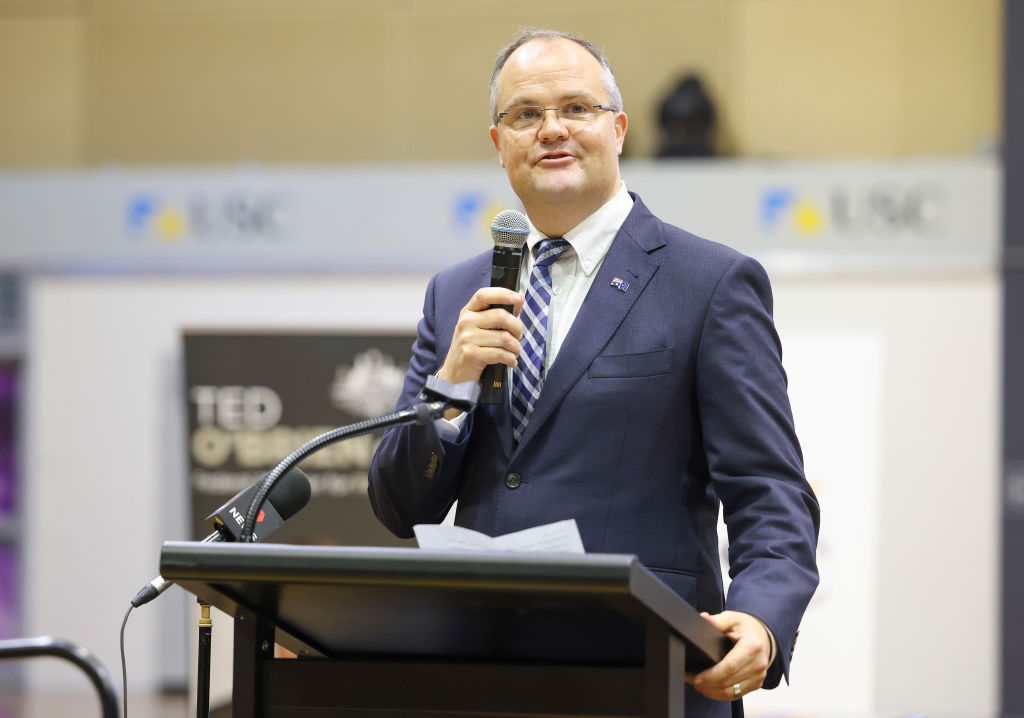Chris Bowen raised concerns over the alliance, questioning the credibility of CSIRO.
A month after the release of the GenCost record, which concluded that the cost of nuclear power far exceeds that of renewables, Coalition silhouetted electricity minister Ted O’Brien wondered about the credibility of the findings.
Debating on the ABC’s 7:30 programme, O’Brien argued that the record-writing nationwide science company, CSIRO, lacked the experience of the Global Atomic Energy Agency (IAEA), particularly in the equivalent aspects of price time. .
The draft record for 2024-25 showed that nuclear plants could cost twice as much as sun or wind power, compared to 30 years for renewables, even though they have the potential to operate for 60 years.
Paul Graham, chief energy economist at CSIRO and founder of Gencost Management, said that “Similar cost savings can be achieved with short-term technologies, including renewable energy, even when taking into account the need to build them twice as often.”
O’Brien said that during a recent parliamentary hearing, CSIRO had acknowledged that they were not as good at nuclear matters as the IAEA, which is concerned with matching calculations on capital costs, but had a different approach at the time. And affordable prices.
He criticized the company’s methodology, saying it did not include “total system costs” that affect household electrical energy expenses.
Coalition’s seven-plant proposal
Opposition leader Peter Dutton is expected to reveal more highlights on the coalition’s nuclear plans after this period. The proposal involves the development of seven nuclear plants across Australia, with costs promised to be determined “within days”.
Dutton said the plan aimed to reduce electricity costs, comparing it to Hard Work’s $275 honorarium for small family expenses – O’Brien claims this instead raised prices by $1,000. Are.
O’Brien said focusing only on upfront capital prices, according to CSIRO records, misses the bigger picture.
He said capital costs in the post-coalition nuclear key points match those of CSIRO, although when it comes to calculating total equipment costs, it is directly related to family expenses.
“What the impact does on your bill at home is a reflection of the total system cost,” he said. “That’s what the Coalition prioritizes – keeping prices down for Australians.”
Hard work protects CSIRO’s self-governance
In response, Electricity Minister Chris Bowen was of the view that the coalition was raising questions about the credibility of CSIRO, a world-renowned medical institution.
“Ted thinks he knows better than CSIRO and AEMO (Australian Energy Market Operator). I don’t know,” Bowen said, defending GenCost’s record and its method.
Bowen was also dissatisfied with the opposition’s suggestion of political interference in the record, describing the allegation as “deeply offensive” to CSIRO’s long-standing reputation for self-determination.
“The findings are indisputable,” he said, adding that CSIRO had also re-analyzed aspects of its modeling in response to O’Brien’s comments, to verify that the criticisms were lacking in evidence.
GenCost’s final report, published in May, found that a nuclear plant would produce electricity at twice the cost of renewables, take twenty years to build, and require at least $8.6 billion in financing.
O’Brien called for CSIRO to re-think its nuclear power price estimates when this was revealed.
Renewables vs Nuclear: A Dear Debate
CSIRO’s draft record estimates that nuclear power will cost between $133 and $222 per megawatt-hour, significantly higher than sun and wind alternatives.
Pace nuclear reactors boast a longer lifetime – up to 60 years compared to 30 years for renewables – but CSIRO says the upfront and ongoing costs, including waste control and decommissioning, make it much less invasive.
Bowen highlighted the delays and rising prices in world nuclear operations.
In the United Kingdom, Hinkley C is 12 years behind the agenda and estimated to cost AU$92 billion, with Life USA recently decommissioning its newscale mini modular reactor (SMR) project due to a 70 percent price drop.
On the other hand, O’Brien argued that Australia risks being harmed if it does not extend its nuclear moratorium, mentioning that increasing SMR generation could render a viable complement.
Bowen responded by saying that the global trend towards renewable energy is simple, with investment surpassing nuclear by a factor of 27.
He noted Australia’s focus should remain on sun, wind and vault solutions for affordable, sustainable electricity.
Nuclear deadline raises additional debate
The timeline for implementing nuclear power has emerged as another important level within the transition between Bowen and O’Brien.
Bowen highlighted world knowledge that the typical assembly life for large-scale nuclear reactors has increased to 12–17 years, raising questions about how the alliance’s nuclear technology might align with Australia’s emissions targets and effort desires. Is.
O’Brien said the alliance’s timeline was based on the IAEA’s global standards, which he described as more valuable than CSIRO’s estimates on development programmes.
“Our planning is consistent with the IAEA’s own program on manufacturing,” O’Brien said, indicating that the alliance’s projections envision world experience life yet take into account Australian-specific desires.


